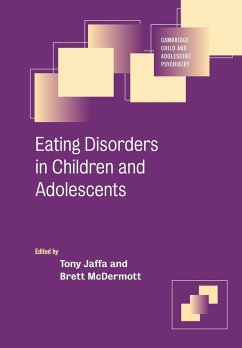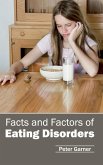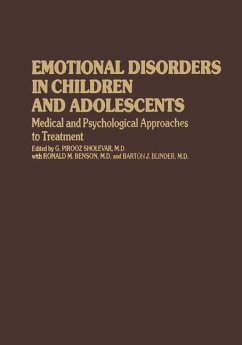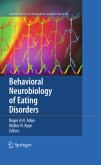Brett McDermott
Eating Disorders in Children and Adolescents
Herausgeber: Jaffa, Tony; McDermott, Brett
Brett McDermott
Eating Disorders in Children and Adolescents
Herausgeber: Jaffa, Tony; McDermott, Brett
- Broschiertes Buch
- Merkliste
- Auf die Merkliste
- Bewerten Bewerten
- Teilen
- Produkt teilen
- Produkterinnerung
- Produkterinnerung
In this 2006 book, an international team of experts examine all the issues relating to eating disorders in young people.
Andere Kunden interessierten sich auch für
![Eating Disorders in Children and Adolescents Eating Disorders in Children and Adolescents]() Eating Disorders in Children and Adolescents164,99 €
Eating Disorders in Children and Adolescents164,99 €![Facts and Factors of Eating Disorders Facts and Factors of Eating Disorders]() Facts and Factors of Eating Disorders183,99 €
Facts and Factors of Eating Disorders183,99 €![Eating Disorders Eating Disorders]() Eating Disorders91,99 €
Eating Disorders91,99 €![Eating Disorders in Boys and Men Eating Disorders in Boys and Men]() Eating Disorders in Boys and Men89,99 €
Eating Disorders in Boys and Men89,99 €![Eating Disorders, Addictions and Substance Use Disorders Eating Disorders, Addictions and Substance Use Disorders]() Eating Disorders, Addictions and Substance Use Disorders235,39 €
Eating Disorders, Addictions and Substance Use Disorders235,39 €![Emotional Disorders in Children and Adolescents Emotional Disorders in Children and Adolescents]() Emotional Disorders in Children and Adolescents43,99 €
Emotional Disorders in Children and Adolescents43,99 €![Behavioral Neurobiology of Eating Disorders Behavioral Neurobiology of Eating Disorders]() Behavioral Neurobiology of Eating Disorders147,99 €
Behavioral Neurobiology of Eating Disorders147,99 €-
-
-
In this 2006 book, an international team of experts examine all the issues relating to eating disorders in young people.
Hinweis: Dieser Artikel kann nur an eine deutsche Lieferadresse ausgeliefert werden.
Hinweis: Dieser Artikel kann nur an eine deutsche Lieferadresse ausgeliefert werden.
Produktdetails
- Produktdetails
- Verlag: Cambridge University Press
- Seitenzahl: 336
- Erscheinungstermin: 29. November 2011
- Englisch
- Abmessung: 244mm x 170mm x 19mm
- Gewicht: 581g
- ISBN-13: 9780521613125
- ISBN-10: 0521613124
- Artikelnr.: 22752809
- Herstellerkennzeichnung
- Produktsicherheitsverantwortliche/r
- Europaallee 1
- 36244 Bad Hersfeld
- gpsr@libri.de
- Verlag: Cambridge University Press
- Seitenzahl: 336
- Erscheinungstermin: 29. November 2011
- Englisch
- Abmessung: 244mm x 170mm x 19mm
- Gewicht: 581g
- ISBN-13: 9780521613125
- ISBN-10: 0521613124
- Artikelnr.: 22752809
- Herstellerkennzeichnung
- Produktsicherheitsverantwortliche/r
- Europaallee 1
- 36244 Bad Hersfeld
- gpsr@libri.de
Brett McDermott is Associate Professor of Child and Adolescent Psychiatry at the University of Queensland, and Director of the Mater Child & Youth Mental Health Service, Brisbane.
Part I. Introduction: 1. Historical and current conceptualisations of
eating disorders: a developmental perspective Mytilee Vemuri and Hans
Steiner; Part II. Scientific Underpinnings: 2. Regulation of food intake
and body weight Julian Mercer; 3. The development of children's shape and
weight concerns Andrew J. Hill; 4. Relation of dieting to eating pathology
Eric Stice, Emily Burton, Michael Lowe and Meghan Butryn; 5. Physical and
cognitive changes associated with puberty Victor M. Fornari and Ida F.
Dancyger; 6. Genetic influences in the development of eating disorders
Shani Leor, Orit Krispin and Alan Apter; 7. Epidemiology of eating
disorders Søren Nielsen; 8. Neuroimaging Janet Treasure and Hans-Christoph
Friederich; Part III. Abnormal States: 9. Anorexia Nervosa in children and
adolescents Rachel Bryant-Waugh; 10. Eating disorders in boys Brett
McDermott; 11. Bingeing and Bulimia Nervosa in children and adolescents
Leora Pinhas, Debra K. Katzman, Gina Dimitropoulos and Blake Woodside; 12.
Selective eating and other atypical eating problems Dasha Nicholls and Tony
Jaffa; 13. Comorbid anxiety and depression and the role of trauma in
children and adolescents with eating disorders Timothy D. Brewerton; 14.
Eating disorders in children with disabilities and chronic illness Peter B.
Sullivan; 15. Childhood obesity Caroline Braet; Part IV. Evidence-Based
Care: 16. Assessment and treatment of acute medical complications during
the refeeding process Carl Laird Birmingham; 17. Assessment and treatment
of chronic medical complications Richard E. Kreipe; 18. Individual
psychotherapy Phillipa P. J. Hay and Brett McDermott; 19. Evidence based
family psychotherapy interventions James Lock and Jennifer Couturier; 20.
Models of service delivery Simon Gowers and Lynne Green; 21.
Psychopharmacology and eating disorders Kristine J. Steffen, James L.
Roerig and James E. Mitchell; Part V. Public Health Perspectives: 22.
Longitudinal perspectives, outcome and prognosis Hans-Christoph
Steinhausen; 23. Primary prevention of eating disorders Greta Noordenbos;
24. Strategies for secondary prevention Greta Noordenbos.
eating disorders: a developmental perspective Mytilee Vemuri and Hans
Steiner; Part II. Scientific Underpinnings: 2. Regulation of food intake
and body weight Julian Mercer; 3. The development of children's shape and
weight concerns Andrew J. Hill; 4. Relation of dieting to eating pathology
Eric Stice, Emily Burton, Michael Lowe and Meghan Butryn; 5. Physical and
cognitive changes associated with puberty Victor M. Fornari and Ida F.
Dancyger; 6. Genetic influences in the development of eating disorders
Shani Leor, Orit Krispin and Alan Apter; 7. Epidemiology of eating
disorders Søren Nielsen; 8. Neuroimaging Janet Treasure and Hans-Christoph
Friederich; Part III. Abnormal States: 9. Anorexia Nervosa in children and
adolescents Rachel Bryant-Waugh; 10. Eating disorders in boys Brett
McDermott; 11. Bingeing and Bulimia Nervosa in children and adolescents
Leora Pinhas, Debra K. Katzman, Gina Dimitropoulos and Blake Woodside; 12.
Selective eating and other atypical eating problems Dasha Nicholls and Tony
Jaffa; 13. Comorbid anxiety and depression and the role of trauma in
children and adolescents with eating disorders Timothy D. Brewerton; 14.
Eating disorders in children with disabilities and chronic illness Peter B.
Sullivan; 15. Childhood obesity Caroline Braet; Part IV. Evidence-Based
Care: 16. Assessment and treatment of acute medical complications during
the refeeding process Carl Laird Birmingham; 17. Assessment and treatment
of chronic medical complications Richard E. Kreipe; 18. Individual
psychotherapy Phillipa P. J. Hay and Brett McDermott; 19. Evidence based
family psychotherapy interventions James Lock and Jennifer Couturier; 20.
Models of service delivery Simon Gowers and Lynne Green; 21.
Psychopharmacology and eating disorders Kristine J. Steffen, James L.
Roerig and James E. Mitchell; Part V. Public Health Perspectives: 22.
Longitudinal perspectives, outcome and prognosis Hans-Christoph
Steinhausen; 23. Primary prevention of eating disorders Greta Noordenbos;
24. Strategies for secondary prevention Greta Noordenbos.
Part I. Introduction: 1. Historical and current conceptualisations of
eating disorders: a developmental perspective Mytilee Vemuri and Hans
Steiner; Part II. Scientific Underpinnings: 2. Regulation of food intake
and body weight Julian Mercer; 3. The development of children's shape and
weight concerns Andrew J. Hill; 4. Relation of dieting to eating pathology
Eric Stice, Emily Burton, Michael Lowe and Meghan Butryn; 5. Physical and
cognitive changes associated with puberty Victor M. Fornari and Ida F.
Dancyger; 6. Genetic influences in the development of eating disorders
Shani Leor, Orit Krispin and Alan Apter; 7. Epidemiology of eating
disorders Søren Nielsen; 8. Neuroimaging Janet Treasure and Hans-Christoph
Friederich; Part III. Abnormal States: 9. Anorexia Nervosa in children and
adolescents Rachel Bryant-Waugh; 10. Eating disorders in boys Brett
McDermott; 11. Bingeing and Bulimia Nervosa in children and adolescents
Leora Pinhas, Debra K. Katzman, Gina Dimitropoulos and Blake Woodside; 12.
Selective eating and other atypical eating problems Dasha Nicholls and Tony
Jaffa; 13. Comorbid anxiety and depression and the role of trauma in
children and adolescents with eating disorders Timothy D. Brewerton; 14.
Eating disorders in children with disabilities and chronic illness Peter B.
Sullivan; 15. Childhood obesity Caroline Braet; Part IV. Evidence-Based
Care: 16. Assessment and treatment of acute medical complications during
the refeeding process Carl Laird Birmingham; 17. Assessment and treatment
of chronic medical complications Richard E. Kreipe; 18. Individual
psychotherapy Phillipa P. J. Hay and Brett McDermott; 19. Evidence based
family psychotherapy interventions James Lock and Jennifer Couturier; 20.
Models of service delivery Simon Gowers and Lynne Green; 21.
Psychopharmacology and eating disorders Kristine J. Steffen, James L.
Roerig and James E. Mitchell; Part V. Public Health Perspectives: 22.
Longitudinal perspectives, outcome and prognosis Hans-Christoph
Steinhausen; 23. Primary prevention of eating disorders Greta Noordenbos;
24. Strategies for secondary prevention Greta Noordenbos.
eating disorders: a developmental perspective Mytilee Vemuri and Hans
Steiner; Part II. Scientific Underpinnings: 2. Regulation of food intake
and body weight Julian Mercer; 3. The development of children's shape and
weight concerns Andrew J. Hill; 4. Relation of dieting to eating pathology
Eric Stice, Emily Burton, Michael Lowe and Meghan Butryn; 5. Physical and
cognitive changes associated with puberty Victor M. Fornari and Ida F.
Dancyger; 6. Genetic influences in the development of eating disorders
Shani Leor, Orit Krispin and Alan Apter; 7. Epidemiology of eating
disorders Søren Nielsen; 8. Neuroimaging Janet Treasure and Hans-Christoph
Friederich; Part III. Abnormal States: 9. Anorexia Nervosa in children and
adolescents Rachel Bryant-Waugh; 10. Eating disorders in boys Brett
McDermott; 11. Bingeing and Bulimia Nervosa in children and adolescents
Leora Pinhas, Debra K. Katzman, Gina Dimitropoulos and Blake Woodside; 12.
Selective eating and other atypical eating problems Dasha Nicholls and Tony
Jaffa; 13. Comorbid anxiety and depression and the role of trauma in
children and adolescents with eating disorders Timothy D. Brewerton; 14.
Eating disorders in children with disabilities and chronic illness Peter B.
Sullivan; 15. Childhood obesity Caroline Braet; Part IV. Evidence-Based
Care: 16. Assessment and treatment of acute medical complications during
the refeeding process Carl Laird Birmingham; 17. Assessment and treatment
of chronic medical complications Richard E. Kreipe; 18. Individual
psychotherapy Phillipa P. J. Hay and Brett McDermott; 19. Evidence based
family psychotherapy interventions James Lock and Jennifer Couturier; 20.
Models of service delivery Simon Gowers and Lynne Green; 21.
Psychopharmacology and eating disorders Kristine J. Steffen, James L.
Roerig and James E. Mitchell; Part V. Public Health Perspectives: 22.
Longitudinal perspectives, outcome and prognosis Hans-Christoph
Steinhausen; 23. Primary prevention of eating disorders Greta Noordenbos;
24. Strategies for secondary prevention Greta Noordenbos.








